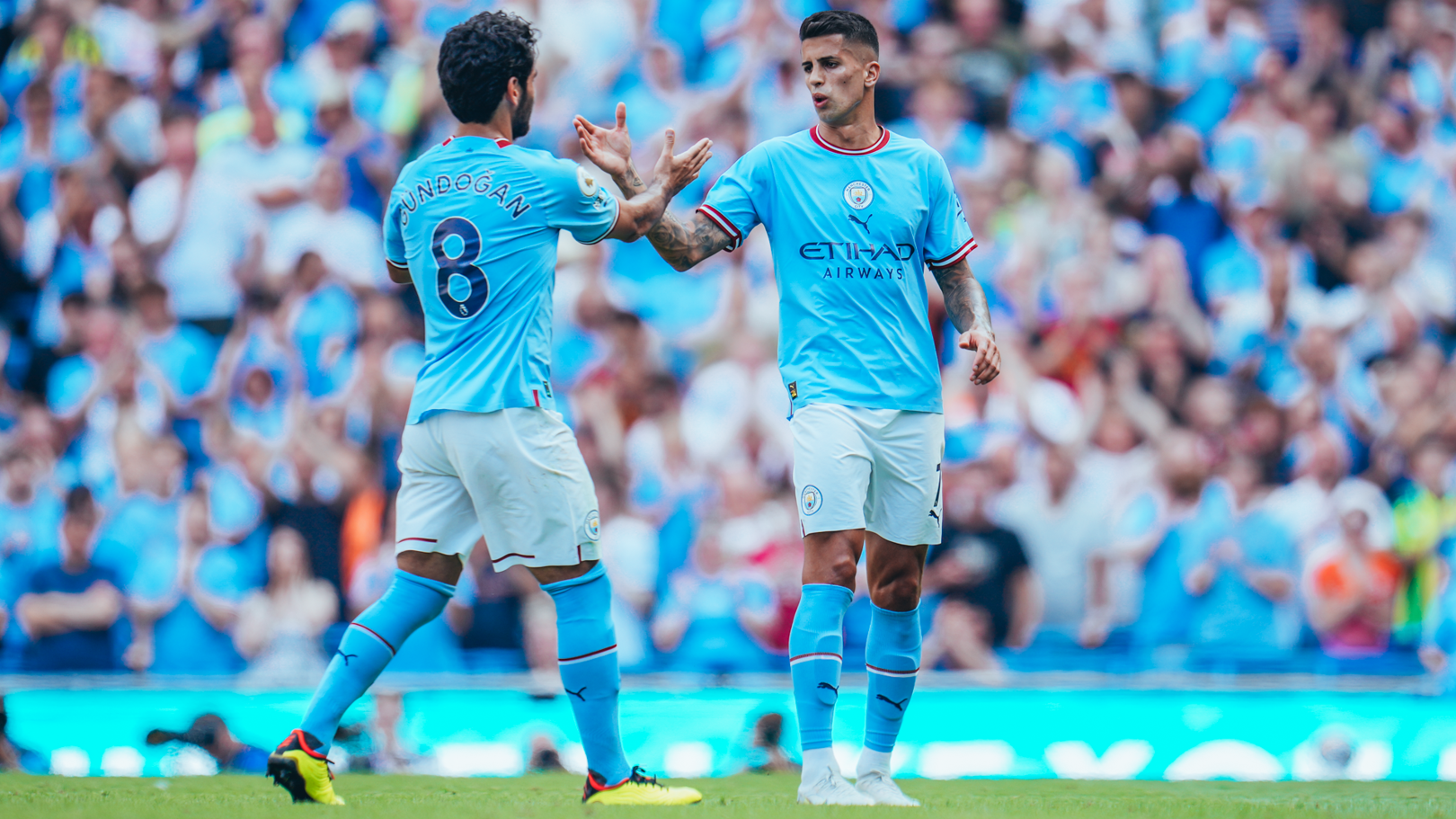Premier League title winners for four of the past five seasons, under Guardiola‘s stewardship City have garnered widespread praise – not least for the way Pep’s players have proved equally at home when deployed in a variety of unfamiliar positions.
Joao Cancelo’s role as an inverted full-back, often pushed into an advanced midfield position to devastating effect, perhaps best illustrates the way Pep’s City have reimagined the way roles can be revolutionised.
For his part, former City defender Onuoha – now a respected pundit and popular regular guest on our Matchday Live show – drew on his own experiences to reveal how the ploy isn’t necessarily a brand-new phenomenon.
CITY+ | SIGN UP TO ACCESS EXCLUSIVE CONTENT
Rather, he says, it’s the way City’s talented players execute the tactical demands placed on them by the boss that marks the Etihad side stand out as such a special group.
“The first time I saw the idea of defenders stepping into midfield was with Ian Holloway when I played under him at Queens Park Rangers,” Onuoha recalled on a recent edition of Matchday Live.
“We had a game one day and Ian put up two formations saying: ‘This is us as a defence and as an attack.’
“And there was one player who was in the backline and then midfield and I thought: ‘This is a bit weird.’
“I remember one preseason before a game Ian said: ‘I need three forwards; the left winger, the right winger and number nine to stay high and so that you pin back the back four.’ He added: ‘Never two players, never four, always three.’
“He recorded the training sessions every day for a month straight. He would watch them and say: ‘Oh they’ve done it again, there’s only two players, now there’s four!’
“The way he described it, he said he’d bought himself this new swimming pool, he’d filled it up, he’d gone to bed and woken up and it was empty again!
SUBSCRIBE TO THE OFFICIAL MAN CITY PODCAST
“Every day, he’s filling it up!
“Whereas for Pep and this City side, the talk is that when a cross comes into the box there needs to be three players in there.
“He doesn’t say: ‘It has to be this forward, the left winger and this player’… there just has to be three.
“And, lo and behold, when the cross does come in there are three players there.
“When we are attacking, we need two sixes – he doesn’t say: ‘I need you Ilkay and such and such to be there.’
“The only place where there is real objective structure is with the two centre backs and the goalkeeper.”
In expanding on his analysis of the hallmarks of City’s tactical fluency, Onuoha said a lot of it was down to the understanding, vision and football intelligence of the players overseen by Guardiola.
DOWNLOAD THE OFFICIAL MAN CITY APP
“It’s about people being in the right positions to suit any particular attack,” Onuoha asserted.
“It doesn’t have to be any particular positions and I think all the City players recognise it and do it almost perfectly all the time.
“It what makes them a bit different to my QPR side back then.
“It’s quite simple, it’s you recognise your position up here but there are some players who really understand not just their role but their role within the bigger picture.
“But other people only think about what they are doing and forget how it affects the rest of the team.
“A manager can see that and get the players who perform that vison he has but not everyone is capable.
“Which is why some players end up at City and other people are still trying to figure out what the manager meant five years later!
“Great individuals… even better team.”









